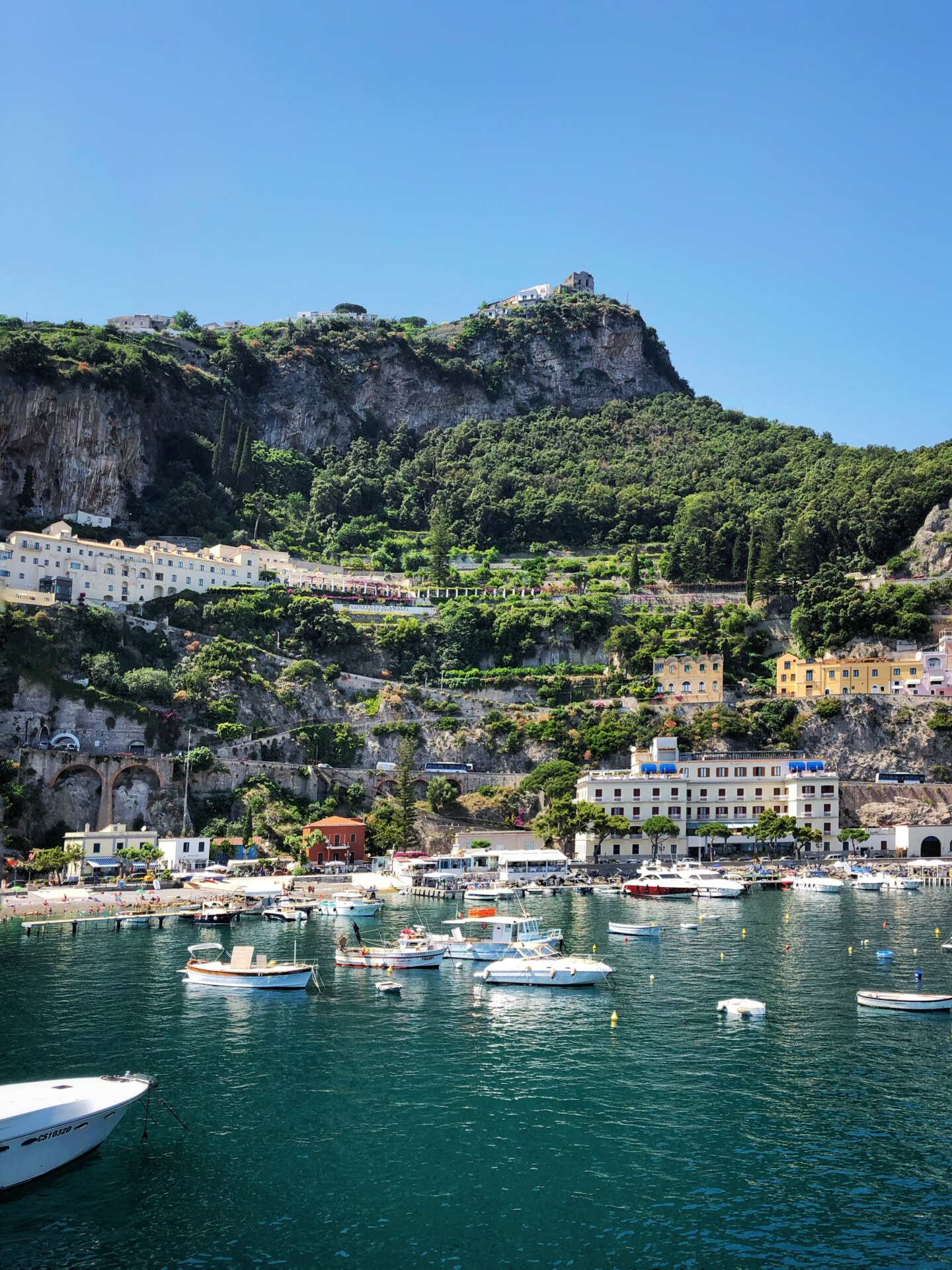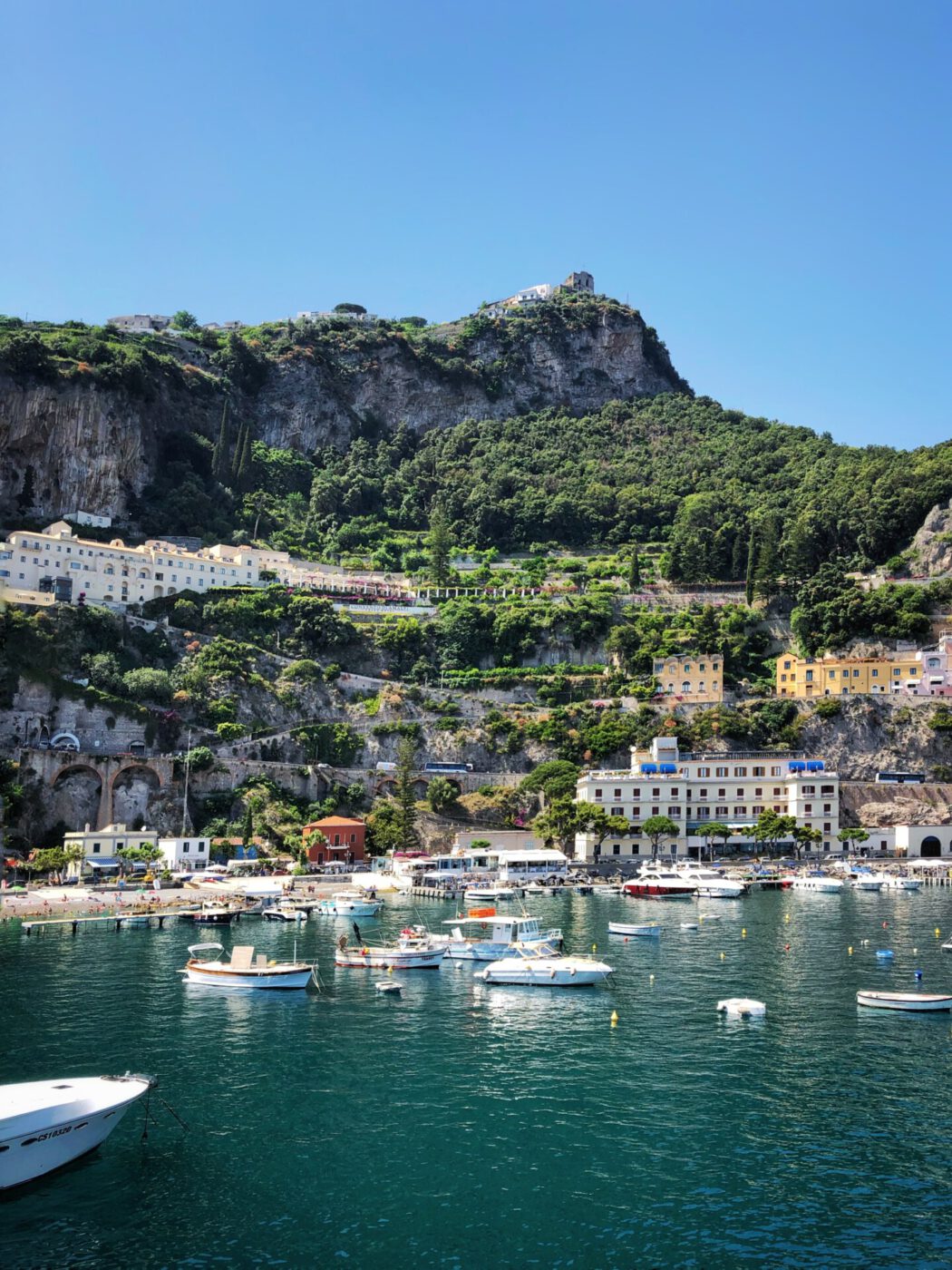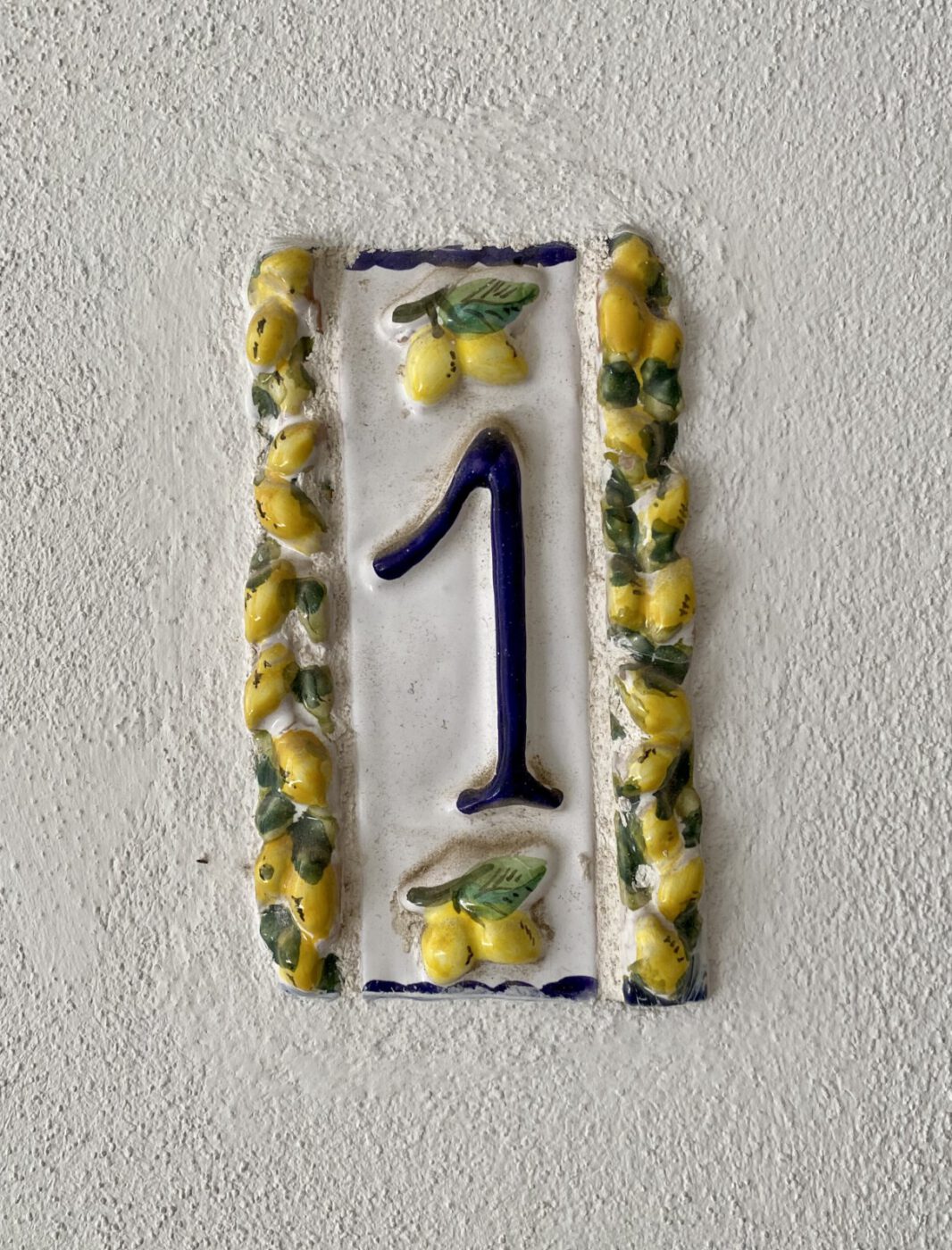I arrive in Amalfi on a filthy spring night. Water runs off the snaking road through the hills from Naples, treacherously bendy at the best of times, and the rain pelting the car windscreen makes the journey even slower than usual. Far below, the sea is churning and grey, not dissimilar to the English coastline I’m used to. It’s a difficult image to reconcile with the picture-perfect scenes I’d seen of this glitzy coastline, the poster child for endless Italian summers. Amalfi is a UNESCO World Heritage Site, an area of outstanding natural beauty, but in the drizzle, the faded coastal town centre leaves a lot to be desired.
Still, I’m here to see lemons, not beaches, and the miles upon miles of lemon trees that line the Amalfi coast are used to this sort of weather. Throughout the long winter months, as the sunshine-yellow fruit gradually ripens and the ancient trees begin to bow with the weight of their juiciness, local farmers tend to the trees as if they were children. Like the vines and olives that also grace the region, lemon trees can live for hundreds of years when grafted and properly cared for.
The trees need this rain. Once spring is over, they’re not given any more water: one of the strict criteria of their IGP status in order to keep the intense flavour and aroma of Sfusato Amalfitano. For this reason, the fruit picked later in the summer and into autumn is stronger and more concentrated, while those we taste in early April are refreshing and fruity enough to eat in thick, raw slices. Huge and lumpy on the outside with a thick rind and deliciously low acidity compared to regular lemons, they’re a carefully bred lemon-citron hybrid which have been cultivated here for around a thousand years.
This specific variety of Amalfi Lemon, named for its long spindle-like shape, has been cultivated only to grow on the coastline around Amalfi. The southern Italian microclimate, the mixing of ocean winds, the specific nutrients in the soil, the pergolas with chestnut poles that support the heavy branches, the thick blankets of plastic nets in winter, the dry terracing that allows the plants to be oxygenated, and the organic fertiliser made with sheep, goat and mule manure… All these things lead to unique growing conditions that can’t be replicated. Every year in February, the harvest begins with the lemons in gardens closest to the sea. Further inland, where the climate is cooler and damper, the last lemons are picked in late October. From February to October, huge sacks of lemons must be carried down the hill by hand.
On my first full day in Amalfi, the April sunshine peeps tentatively out, and I wander into the centre of the ancient fishing village with purpose. I’m spending the day at the Aceto family’s terraced lemon farm, a landmark on the Costiera Amalfitana since 1825. Above the main town centre, the farm spans one side of the valley with broad stone terraces built neatly into the craggy terrain. Salvatore Aceto himself–the fifth generation to run the family business–is waiting for me in a green and yellow striped golf buggy at the bottom of the hill.
It’s hard manual labour, and Sal wastes no time in telling me that inheriting a lemon farm is not the charmed existence it might sound like. While the climate and fertile soils are ideal, the terrain is perilous and unforgiving. The rocky outcrops make the use of machinery impossible and lemon growers have to work extremely hard for their harvest, climbing thousands of stone steps every day with large baskets to collect their fruits. After all, lemon farming is often described as Italy’s agricoltura eroica (“heroic agriculture”).
Dotted across the valley above Amalfi, which was once filled with lemon farms, we now see just as many derelict houses. “Look over there,” Salvatore points, and we gaze across a parched, arid patch of land on the opposite side of the valley. “Twenty years ago, I was so envious of their lemon trees.” This family farm, like so many others, struggled with rising costs of manual farming and a constant squeeze on prices of lemons as people began buying from more intensive farms elsewhere. Eventually the family abandoned the farmhouse, leaving parched, dead trees and disused out-buildings. Without deep roots and stone terraces of lemon groves to keep these deserted farms in place, there’s a greater risk of landslides, already rife along the steep and craggy mountain sides here.
There is hope, though. Salvatore and his brother Marco, who we meet in the limoncello shop later on, are founding members of Cooperativa Amalfitana Trasformazione Agrumi–a farmers’ cooperative focused on protecting cultivation and bringing young people back into the business. Unable to compete with production volumes in Spain or Sicily, the Aceto family have instead been working for decades to raise awareness of their particular type of lemon, unique in the world for quality and organoleptics. Sal and Marco promote organic and sustainable production by embracing their father Luigi’s ethos and following the ICEA Certified Organic Agriculture guidelines.
Sal feels deeply guilty for handing over a business laden with so much responsibility to his children, but is equally unwilling to go the way of his neighbours. “These trees are my children and this is my cathedral,” he tells me dramatically as we walk through a particularly picturesque tree-lined canopy, pointing out grafted trees that are 280 years old. “Students and scientists and chefs come from all over the world to learn about our lemon farm, so perhaps these visitors spell our future.” With that, I’m handed a delicious slice of lemon cake and sent on my way.

That night, I dine at Hotel Santa Caterina’s Glicine restaurant, where Amalfi lemons are woven throughout the Spring menu in all sorts of delicious ways. There’s spaghetti with lemon and pecorino sauce, which complements fat red prawns from the nearby harbour of Nassa, and risotto upon which floral lemon zest is grated at the last moment. A classic Amalfi lemon salad–made of the white “bread” (i.e. pith) of the lemon, as well as the sour flesh–is another staple at the hotel. Drizzled with top quality olive oil, black pepper, salt and some roughly torn mint, the “bread” is bitter-sweet and delicately floral. Slightly spongy in texture, the Amalfi lemon pith is a world away from the inedible pith of most other lemons and delicious when generously seasoned.
And then there are the desserts: sweet and sharp torta al limone, cannoli with lemon cream, and delizia al limone–a sponge cake soaked in limoncello, topped with whipped lemon cream. On the menu that night is head chef Peppe Stanzione’s playful and experimental “Il Limone”, a frozen parfait covered in white chocolate to look just like a whole lemon, dimples and all.
Between the clifftop hotel and the ocean, guests can climb through acres of lemon groves (perfectly pruned by an army of gardener-farmers), their leaves filling the air with an appealing citrus smell. Right now, the trees are covered in a thick blanket of netting to protect them from the worst of the winter storms. In May, I’m told, when the lemon blossoms are in full bloom, the whole place is almost impossibly perfumed with the white flowers.
As much as the gleaming turquoise sea and bougainvillaea-clad courtyards, these lemon trees have been the essence of the Amalfi coast for almost a thousand years. They represent the colour, the flavour, the scent of the entire coastline–from painted crockery and tacky souvenir aprons, to artisanal limoncello and historic family recipes. And like all the other attractions here, they represent a local history and community that is real and alive, still plugging away behind the Disneyland-esque temptations.











